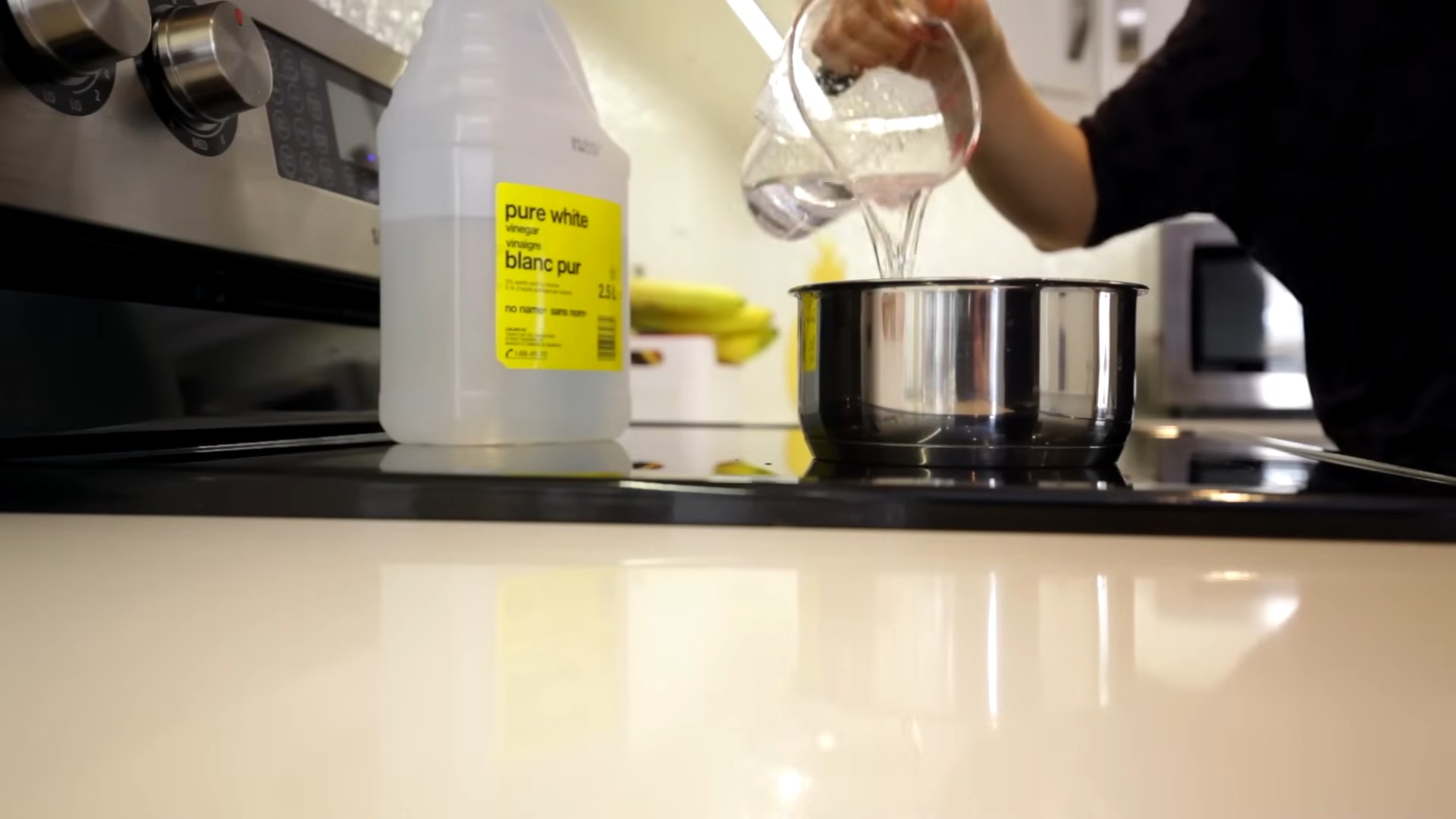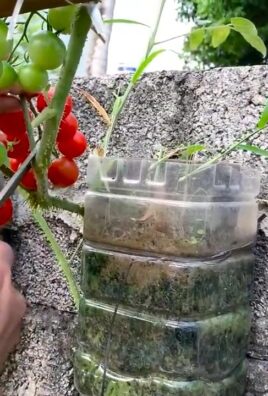Grow Bok Choy at Home? Absolutely! Imagine stepping outside your back door and harvesting fresh, crisp bok choy for your stir-fries or salads. No more trips to the grocery store, no more wilted greens – just vibrant, homegrown goodness right at your fingertips.
For centuries, bok choy, also known as pak choi, has been a staple in Asian cuisine, revered not only for its delicious flavor but also for its nutritional benefits. From ancient Chinese gardens to modern-day kitchens, this versatile vegetable has nourished families and delighted palates. Now, you can easily bring this tradition to your own home garden!
Many people shy away from gardening, thinking it’s too complicated or time-consuming. But I’m here to tell you that growing your own bok choy is surprisingly simple, even if you have limited space or experience. This DIY guide is packed with easy-to-follow tricks and hacks that will empower you to grow bok choy at home successfully. We’ll cover everything from seed selection and soil preparation to pest control and harvesting, ensuring you have a bountiful harvest of this nutritious and delicious vegetable. So, let’s get our hands dirty and embark on this exciting gardening adventure together!

Grow Your Own Delicious Bok Choy: A Beginner’s Guide
Hey there, fellow gardening enthusiasts! Are you ready to add a crisp, healthy, and delicious vegetable to your home garden? I’m talking about Bok Choy! This versatile leafy green is surprisingly easy to grow, even if you’re a complete beginner. I’m going to walk you through everything you need to know to cultivate your own thriving Bok Choy patch, from seed to harvest. Let’s get started!
Choosing the Right Bok Choy Variety
First things first, let’s talk about variety. Bok Choy comes in different shapes and sizes, and choosing the right one for your space and climate is important. Here are a few popular options:
* Shanghai Bok Choy: This variety has a milder flavor and is known for its spoon-shaped, light green leaves and pale green stalks. It’s a great choice for salads and stir-fries.
* Ching Chiang Bok Choy: This is a smaller, more compact variety, perfect for container gardening or smaller gardens. It has dark green leaves and white stalks.
* Mei Qing Choi: Another compact variety with light green leaves and thick, juicy stalks. It’s known for its crisp texture and slightly sweet flavor.
* Joi Choi: A larger variety with dark green, crinkled leaves and thick, white stalks. It’s a good choice for those who want a more substantial harvest.
Consider your space, climate, and taste preferences when making your selection. I personally love Shanghai Bok Choy for its mild flavor and versatility.
Preparing Your Bok Choy Growing Environment
Bok Choy thrives in cool weather, making it an ideal crop for spring and fall. Here’s how to prepare your growing environment:
* Timing is Key: Plant Bok Choy seeds in early spring (2-4 weeks before the last expected frost) or late summer (6-8 weeks before the first expected frost). Avoid planting during the hottest months, as high temperatures can cause bolting (premature flowering).
* Sunlight: Bok Choy needs at least 4-6 hours of sunlight per day. Choose a location in your garden that receives ample sunlight. If you’re growing in containers, make sure you can move them to a sunny spot.
* Soil: Bok Choy prefers well-drained, fertile soil with a pH between 6.0 and 7.5. Amend your soil with compost or other organic matter to improve drainage and fertility. I like to add a generous amount of composted manure to my Bok Choy beds.
* Spacing: Space Bok Choy plants 6-8 inches apart in rows that are 12-18 inches apart. This allows for good air circulation and prevents overcrowding. For smaller varieties like Ching Chiang, you can space them closer together.
Step-by-Step Planting Guide
Now that you’ve chosen your variety and prepared your growing environment, it’s time to plant! Here’s a step-by-step guide:
1. Sowing Seeds: You can start Bok Choy seeds indoors or directly sow them in your garden. For indoor starting, sow seeds 4-6 weeks before the last expected frost. Sow seeds ¼ inch deep in seed-starting trays or pots filled with seed-starting mix. Keep the soil moist and warm (around 70°F).
2. Direct Sowing: If you’re directly sowing seeds in your garden, wait until the soil has warmed up to at least 50°F. Sow seeds ¼ inch deep and 1 inch apart in rows. Thin seedlings to 6-8 inches apart once they have a few true leaves.
3. Transplanting Seedlings: If you started your seeds indoors, harden them off before transplanting them to your garden. Hardening off involves gradually exposing the seedlings to outdoor conditions over a period of 7-10 days. Start by placing them in a sheltered location for a few hours each day, gradually increasing the amount of time they spend outdoors.
4. Planting Seedlings: Once your seedlings are hardened off, transplant them to your garden, spacing them 6-8 inches apart. Water them thoroughly after planting.
5. Watering: Bok Choy needs consistent moisture to thrive. Water regularly, especially during dry periods. Aim to keep the soil evenly moist, but not waterlogged. I usually water my Bok Choy every other day, or more frequently if the weather is hot and dry.
6. Fertilizing: Bok Choy is a heavy feeder, so it benefits from regular fertilization. Apply a balanced fertilizer (such as 10-10-10) every 2-3 weeks. You can also side-dress your plants with compost or composted manure.
7. Mulching: Apply a layer of mulch around your Bok Choy plants to help retain moisture, suppress weeds, and regulate soil temperature. Straw, shredded leaves, or wood chips are all good options.
Protecting Your Bok Choy from Pests and Diseases
Like all vegetables, Bok Choy can be susceptible to pests and diseases. Here are some common problems and how to deal with them:
* Cabbage Worms: These green caterpillars can devour Bok Choy leaves. Handpick them off your plants or use Bacillus thuringiensis (Bt), a natural insecticide. I’ve found that covering my Bok Choy with row covers also helps to prevent cabbage worms.
* Flea Beetles: These tiny beetles can create small holes in Bok Choy leaves. Use insecticidal soap or neem oil to control them.
* Aphids: These small, sap-sucking insects can weaken Bok Choy plants. Spray them off with a strong stream of water or use insecticidal soap.
* Downy Mildew: This fungal disease can cause yellow spots on Bok Choy leaves. Improve air circulation by spacing plants properly and avoid overhead watering.
* Clubroot: This soilborne disease can cause swollen roots and stunted growth. Prevent clubroot by practicing crop rotation and maintaining a soil pH above 7.0.
Regularly inspect your Bok Choy plants for signs of pests or diseases. Early detection and treatment can prevent serious problems.
Harvesting Your Bok Choy
The moment you’ve been waiting for! Bok Choy is ready to harvest when the leaves are about 6-8 inches long. You can harvest the entire plant at once or harvest individual leaves as needed.
* Whole Plant Harvest: To harvest the entire plant, cut it off at the base with a sharp knife.
* Leaf Harvest: To harvest individual leaves, simply cut them off near the base of the plant. This allows the plant to continue producing new leaves.
Bok Choy is best eaten fresh, but it can also be stored in the refrigerator for up to a week. Wrap it loosely in a plastic bag to prevent it from drying out.
Enjoying Your Homegrown Bok Choy
Now that you’ve harvested your Bok Choy, it’s time to enjoy the fruits (or rather, vegetables) of your labor! Bok Choy is incredibly versatile and can be used in a variety of dishes. Here are a few ideas:
* Stir-fries: Bok Choy is a classic ingredient in stir-fries. Add it to your favorite stir-fry recipe for a healthy and delicious boost.
* Salads: Young, tender Bok Choy leaves can be added to salads for a crisp and refreshing flavor.
* Soups: Bok Choy can be added to soups for a nutritious and flavorful addition.
* Steaming: Steamed Bok Choy is a simple and healthy side dish.
* Sautéing: Sauté Bok Choy with garlic and ginger for a quick and easy side dish.
I personally love to stir-fry Bok Choy with garlic, ginger, and a touch of soy sauce. It’s a quick, easy, and delicious meal that’s packed with nutrients.
Troubleshooting Common Bok Choy Growing Problems
Even with the best care, you might encounter some challenges when growing Bok Choy. Here are some common problems and how to address them:
* Bolting (Premature Flowering): Bolting is often caused by high temperatures or stress. To prevent bolting, plant Bok Choy in cool weather, provide consistent moisture, and avoid stressing the plants.
* Stunted Growth: Stunted growth can be caused by poor soil, lack of nutrients, or pests and diseases. Amend your soil with compost, fertilize regularly, and inspect your plants for pests and diseases.
* Yellowing Leaves: Yellowing leaves can be caused by nutrient deficiencies, overwatering, or underwatering. Check your soil moisture and nutrient levels and adjust accordingly.
Don’t be discouraged if you encounter problems. Gardening is a learning process, and every challenge is an opportunity to learn and improve.
Extending Your Bok Choy Harvest
Want to enjoy Bok Choy throughout the growing season? Here are a few tips for extending your harvest:
* Succession Planting: Sow Bok Choy seeds every 2-

Conclusion
So, there you have it! Growing your own bok choy at home is not only surprisingly simple, but also incredibly rewarding. Forget those wilted, overpriced heads at the grocery store. Imagine stepping out into your garden or onto your balcony and harvesting crisp, vibrant bok choy whenever you need it. The flavor difference alone is enough to convince anyone to give it a try. Freshly grown bok choy boasts a delicate sweetness and satisfying crunch that store-bought varieties simply can’t match.
But the benefits extend far beyond just taste. By embracing this DIY project, you’re taking control of your food source, ensuring that your bok choy is free from harmful pesticides and herbicides. You’re also reducing your carbon footprint by eliminating the transportation and packaging associated with commercially grown produce. Plus, let’s be honest, there’s something deeply satisfying about nurturing a plant from seed to harvest. It’s a connection to nature that can be incredibly grounding and therapeutic.
This method of growing bok choy at home is a must-try for anyone, regardless of their gardening experience. Whether you’re a seasoned green thumb or a complete beginner, the steps are straightforward and the results are well worth the effort.
Looking for ways to personalize your bok choy growing experience? Consider experimenting with different varieties. Baby bok choy is perfect for quick stir-fries, while Shanghai bok choy offers a slightly milder flavor. You can also try growing your bok choy in containers of varying sizes to see what works best for your space. If you live in a particularly hot climate, providing some afternoon shade can help prevent bolting (premature flowering). And for those with limited space, vertical gardening techniques can be a great way to maximize your yield.
Don’t be afraid to get creative and adapt the process to suit your own needs and preferences. The most important thing is to give it a try and see what works best for you.
We are confident that once you experience the joy of harvesting your own homegrown bok choy, you’ll never go back to buying it at the store. It’s a simple, sustainable, and incredibly delicious way to enhance your meals and connect with nature.
So, what are you waiting for? Grab some seeds, prepare your soil, and get ready to embark on your bok choy growing adventure! We can’t wait to hear about your experiences. Share your photos, tips, and questions in the comments below. Let’s build a community of home gardeners and celebrate the joys of growing our own food. Let us know if you have any questions about how to grow bok choy at home. Happy gardening!
Frequently Asked Questions (FAQ)
What is the best time of year to plant bok choy?
Bok choy is a cool-season crop, meaning it thrives in cooler temperatures. The best time to plant bok choy is in early spring or late summer/early fall. Avoid planting during the hottest months of summer, as high temperatures can cause the plants to bolt (go to seed prematurely), resulting in a bitter taste. For a spring crop, start seeds indoors 4-6 weeks before the last expected frost. For a fall crop, direct sow seeds in the garden 6-8 weeks before the first expected frost.
How much sunlight does bok choy need?
Bok choy prefers full sun, which means at least 6 hours of direct sunlight per day. However, it can tolerate partial shade, especially in hotter climates. If you live in a region with intense summer heat, providing some afternoon shade can help prevent bolting.
What kind of soil is best for growing bok choy?
Bok choy grows best in well-drained, fertile soil that is rich in organic matter. Amend your soil with compost or well-rotted manure before planting to improve its fertility and drainage. The ideal soil pH for bok choy is between 6.0 and 7.5.
How often should I water bok choy?
Bok choy needs consistent moisture to thrive. Water regularly, especially during dry periods, to keep the soil consistently moist but not waterlogged. Aim to water deeply and less frequently, rather than shallowly and more often. Mulching around the plants can help retain moisture in the soil.
How do I fertilize bok choy?
Bok choy is a heavy feeder, so it benefits from regular fertilization. Apply a balanced fertilizer, such as 10-10-10, according to the package directions. You can also side-dress the plants with compost or well-rotted manure every few weeks. Avoid over-fertilizing, as this can lead to excessive leaf growth and reduced flavor.
What are some common pests and diseases that affect bok choy?
Common pests that can affect bok choy include aphids, cabbage worms, flea beetles, and slugs. To control these pests, you can use insecticidal soap, Bacillus thuringiensis (Bt) for cabbage worms, or diatomaceous earth for flea beetles and slugs. Common diseases that can affect bok choy include downy mildew and clubroot. To prevent these diseases, ensure good air circulation around the plants and avoid overwatering. Crop rotation can also help prevent soilborne diseases.
How do I harvest bok choy?
Bok choy can be harvested at any stage of growth, depending on your preference. Baby bok choy can be harvested when the leaves are about 4-6 inches long. Mature bok choy can be harvested when the heads are firm and compact. To harvest, simply cut the entire head at the base of the plant with a sharp knife. You can also harvest individual leaves as needed, starting with the outer leaves.
Can I grow bok choy in containers?
Yes, bok choy can be successfully grown in containers. Choose a container that is at least 12 inches deep and wide to allow the roots to develop properly. Use a well-draining potting mix and water regularly. Container-grown bok choy may need to be fertilized more frequently than plants grown in the ground.
How do I prevent bok choy from bolting?
Bolting is when a plant prematurely flowers and goes to seed, which can make the leaves bitter. To prevent bolting in bok choy, plant it during the cool season, provide some afternoon shade in hot climates, and water regularly to keep the soil consistently moist. Choose bolt-resistant varieties if available.
Can I save seeds from my bok choy plants?
Yes, you can save seeds from your bok choy plants, but it requires allowing the plants to bolt and produce seed pods. However, bok choy is an open-pollinated plant, meaning it can cross-pollinate with other members of the Brassica family, such as cabbage and kale. If you want to save true-to-type seeds, you’ll need to isolate your bok choy plants from other Brassicas. Allow the seed pods to dry on the plant, then harvest them and extract the seeds. Store the seeds in a cool, dry place.




Leave a Comment